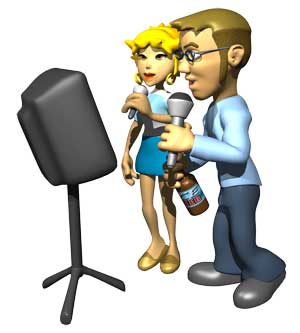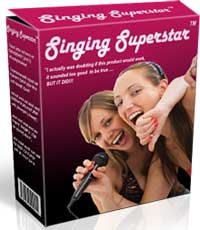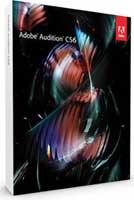 Have you ever wished you could remove vocals from a song so you could use the music behind YOUR voice? Perhaps you want to make a CD for a karaoke party, or you just want to try it because it’s cool. Well in this computer age, it is possible (usually) to do just that.
Have you ever wished you could remove vocals from a song so you could use the music behind YOUR voice? Perhaps you want to make a CD for a karaoke party, or you just want to try it because it’s cool. Well in this computer age, it is possible (usually) to do just that.
Before I tell you how, I should quickly mention a couple of things. This technique won’t work with every recording you try it on. Much will depend on how the lead vocal was mixed by the original producer. the only 100% guaranteed way to do it perfectly is to have the original tracks to the song (not likely if it’s a popular song). But you can usually get close enough. Also, speaking of the original producer, if you do manage to remove the lead vocal the remaining recording still is under copyright. So a review of copyright law may be prudent if you hope to publish the recording.
Okay! So how can you get this done? First you need audio editing software. If don’t already have your own, try Audacity, which is open source freeware that you can download from the web. For this you’ll also need a plug-in (also free) for Audacity called “Center Pan Remover.” Then you just put that file into the Plugins folder in Audacity. There are instructions on the Audacity website on how to do all this.
 Now open Audacity, and open the song from which you want to remove the lead vocal. Next, you’ll notice that the song is a stereo track (has two waveforms, left and right). The reason this process works is that usually, a lead vocal in panned into the center of the stereo field. So if you can somehow isolate and cancel that center part, you can usually remove the lead vocal. For songs where the lead vocal is NOT panned to the center, which isn’t very common, this process won’t work very well. In that case, I recommend trying something like Singing Superstar
Now open Audacity, and open the song from which you want to remove the lead vocal. Next, you’ll notice that the song is a stereo track (has two waveforms, left and right). The reason this process works is that usually, a lead vocal in panned into the center of the stereo field. So if you can somehow isolate and cancel that center part, you can usually remove the lead vocal. For songs where the lead vocal is NOT panned to the center, which isn’t very common, this process won’t work very well. In that case, I recommend trying something like Singing Superstar (and you can download it right now!), which does some amazing things, including removing vocals from your favorite songs on your CDs, mp3s, etc.
All you have to do now (back to the Audacity method) is select the entire song by clicking in the area around the pan and volume controls on the left side of the track, go to the Effect drop-down menu, and choose Center Pan Remover. The default setting ought to work just fine. But if not, undo it and try some different values in the “frequencies above” and “frequencies below” windows. I recommend 250 Hz for frequencies above and 3,000 Hz for frequencies below.
If everything went according to plan, you now have the music without the lead vocal. Now you can sing along with your favorite band.

This doesn’t always work well with Audacity. Other audio editors can do it better, such as Adobe Audition. Just load up the song in the edit window and apply the Center-Channel Extractor effect.
If you don’t have access to Adobe Audition or other high-end editor, try any of the programs out there designed specifically for this purpose, like Singing Superstar.
Have fun!
Learn more cool things to do with your home recording studio with our video tutorials.
 The following is a list of 5 really important things about audio recording that would have made my life soooo much easier if I had known them when I started with my first home recording studio. Hopefully this article will be of great benefit to you if you want to learn home recording. This is part 1 in a series.
The following is a list of 5 really important things about audio recording that would have made my life soooo much easier if I had known them when I started with my first home recording studio. Hopefully this article will be of great benefit to you if you want to learn home recording. This is part 1 in a series.